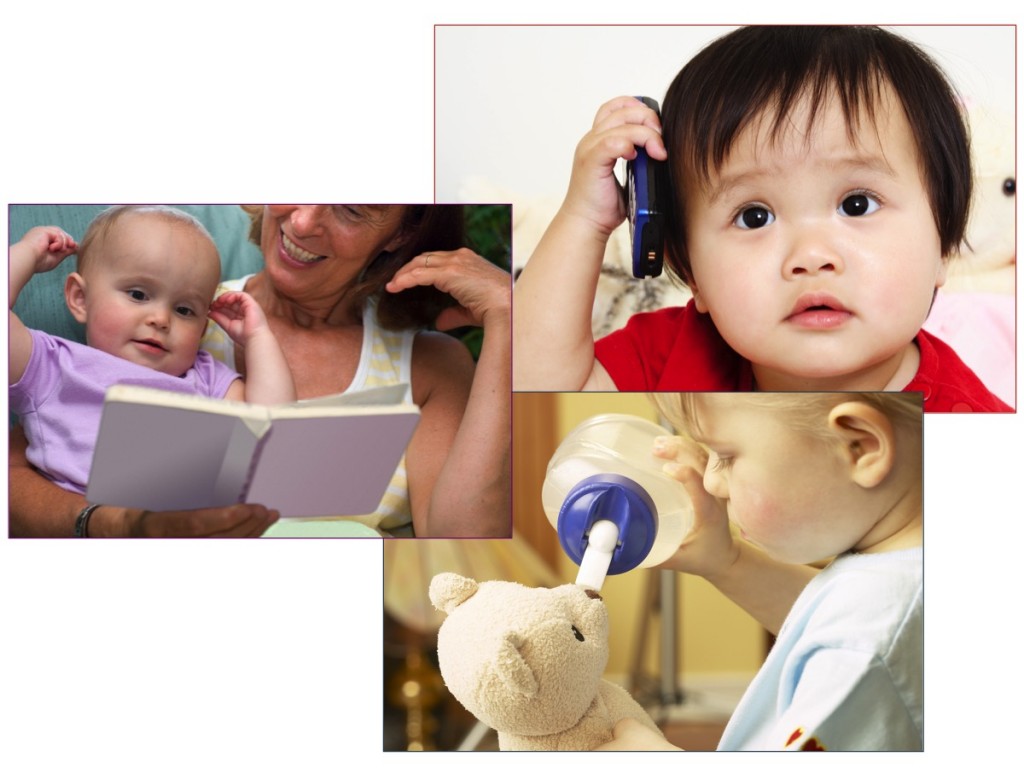
Imitation provides a social-emotional connection between infants and others. It also advances cognitive development by helping children learn about objects in their environment. How do young children know to pick up a phone and put it to their ear? What leads them to feed their stuffed toy a bottle? Children learn a lot about the world, themselves and other people simply by observing what you and others do in their environment. Between one and one-and-a-half years of age, children learn 1 to 2 new behaviors a day through copying the actions of other people. Over six months, that’s a lot of learning from imitation!
Learning by imitation also reduces the amount of children’s trial-and-error learning. In trial-and-error learning, children try different actions until they finally perform the correct one. Imagine how many different actions a child might perform with a phone before they stumble on the standard use. But when children can follow a model’s example, they are likely to quickly discover the typical way to use a phone. Over time, imitation helps children learn traditions, customs, rules, and how to act in their culture and society.
Imitation also plays an important role in infant communication. Before babies talk, they tell us a lot about what they know and understand through imitation. Imitation tasks teach us what children recall, or remember from a previous experience. A child might re-enact or imitate what they saw grandma, grandpa, or a friend do the day before. This shows us that they saw and remembered other people’s actions. Through imitation, we can peek inside their minds, even when they cannot use language to tell us what they remember.
-
- Control group
- a group in a study who does not receive the treatment. The group serves as a comparison for the experimental group.
- Deferred imitation
- reproducing a behavior after a delay from its initial demonstration
- Electroencephalography (EEG)
- a method used to measure electrical activity in the brain
- Generalization
- the ability to apply something learned in one situation to a new situation
- Imitation
- observing then reproducing, or copying, a behavior
- Mirror neurons
- a type of brain cell. Mirror neurons respond when an animal produces an action and when they observe another animal produce the same action.
- Theory of mind
- the awareness that other people can have different thoughts and feelings from one’s own
- Trial-and-error learning
- trying different actions until you perform the right one